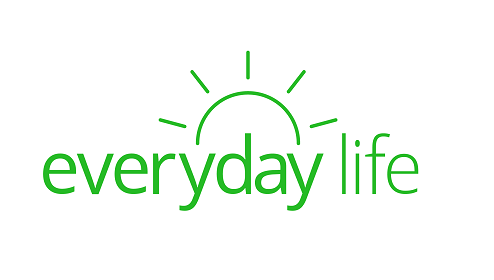Life insurance riders are add-ons that you can include in your life insurance policy. They offer additional coverage and most carriers offer them at a low cost to your monthly premium, if any at all. However, price generally varies by carrier. They help cater to your individual needs, including financial status, lifestyle choices and health conditions.
Some riders provide additional coverage to your family after your death, while others provide financial support to you while you’re still alive.
Riders must be added on when you are purchasing your policy. You cannot add a life insurance rider to your policy after you buy it. Read our full guide to life insurance riders to understand which life insurance riders might be right for you.
KEY TAKEAWAYS
- Riders are added benefits included in life insurance policies.
- Some life insurance riders can benefit you while you’re still alive.
- The two most common life insurance riders are disability waiver of premium and accidental death and dismemberment coverage.
- Life insurance policy riders often increase the cost of your premium, but some riders can be added for free.
Type of life insurance riders
There are five main categories of riders, with a few options within each.
The following major categories for life insurance riders are:
- Accelerated death benefit insurance riders
- Critical illness insurance riders
- Family insurance riders
- Accidental death and dismemberment insurance riders
- Benefit structure insurance riders
Accelerated death benefit insurance riders
Accelerated death benefit riders provide you with financial support while you’re still alive. This rider provides the ability to cash in some of your death benefit if you’re diagnosed with a terminal illness. You’ll need to provide an official doctor’s diagnosis stating you have a terminal illness and have 6 to 12 months to live.
You can use your death benefit for medical expenses, live-in care, hospice care or nursing home costs. You can also use it for travel or spending your last days exactly how you’d like to. The death benefit given under this rider is not one lump sum but can be used as needed. How much you can withdraw varies by each insurance company, but typically you can only withdraw up to 80% of the original death benefit amount.
Critical illness insurance riders
Like accelerated death benefit riders, critical illness riders also pay out accelerated death benefits if you have a critical illness, such as a heart attack, cancer, stroke, kidney failure, ALS or other critical conditions that lower your life expectancy.
Critical illness riders are taken out as a lump sum from your death benefit, and what remains of the death benefit is paid to your beneficiaries after your passing.
The following riders are critical illness rider options:
Chronic Illness Insurance Rider
A chronic illness insurance rider pays out while you’re still alive if you cannot perform more than two of the six activities of daily living. These activities include: bathing, eating, getting dressed, toileting, transferring, and continence.
Long-term care insurance rider
Similar, but different. This rider also pays out if you can’t perform two of the six activities of daily living. Instead of paying accelerated benefits, it provides long-term care to those who are unable to take care of themselves.
Waiver of premium for disability insurance rider
You can use this rider to pay for your life insurance premiums if you are experiencing a qualifying disability. This rider is usually very hard to qualify for and not worth the extra cost.
Family insurance riders
All family insurance riders offer additional financial support to your family. There are two types:
Spousal insurance rider
A spousal insurance rider pays you some funds if your spouse dies and didn’t have their own life insurance policy. However, it won’t provide as much coverage as a traditional policy would.
Child protection rider
A child protection rider pays out a small death benefit if your child passes away. This fund can cover funeral expenses or time off work while the parents grieve. The child protection rider can also offer coverage if your child has a medical condition that will shorten their lifespan.
Accidental death and dismemberment insurance riders
The accidental death and dismemberment insurance rider (AD&D) offers additional coverage to people with a dangerous occupation or hobby. While only people with riskier lifestyles really need it, it can also cover freak accidents,
The AD&D rider will pay out if you lose a limb, eyesight, or hearing in an accident. Sometimes these riders can be included at no cost, and many final expense or whole life policies include them at a very low cost. If you work in a dangerous job or have risky hobbies, you should tell your agent so you can add this on to your policy.
Benefit structure insurance riders
Benefit structure insurance riders solely focus on the ability to change your current policy if needed. The following options are as follows:
Return of premium insurance rider
The return of premium rider pays back your premiums if you outlive your policy’s term, but the rates for return of premium riders are very costly. When it comes to using your money wisely, it would be more beneficial to put the money you would spend on a return of premium rider into savings or investment accounts.
Term conversion rider
A term conversion rider allows you to convert your term policy into a whole life insurance policy at the end of its term. The benefit of this rider is that once the term policy ends, you won’t have to go through the underwriting process again to extend your coverage. If you are elderly when your term policy expires, this would be a great option to add.
Guaranteed insurability rider
You can use the guaranteed insurability rider to increase the death benefit when you experience major milestones — such as marriage, children and grandchildren. There are specific dates when you can adjust your death benefit alongside the 30 to 90 days after a major life event.
You will have to pay more to increase of coverage, but by skipping the medical exam, you won’t be liable for even higher premiums due to changes in health. However, after age 50, you will need to take the medical exam to get more coverage.
Are life insurance riders worth it?
Whether or not life insurance is worth it depends on your finances, personal situation and lifestyle.
Riders that are free, such as the term converison rider, are generally worth adding on since they don’t increase your premiums. But riders that come at an extra cost may not always be. You should discuss your options with your life insurance agent so you’re getting the most comprehensive coverage for your situation.









